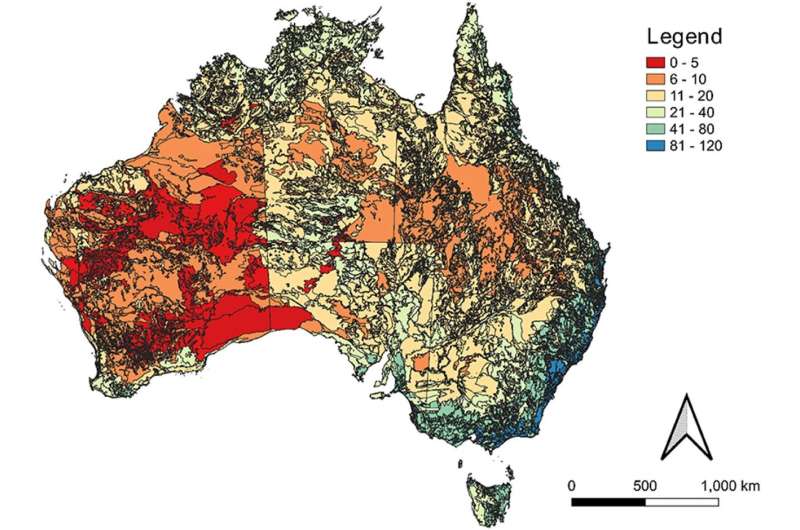Bringing back bushfoods: Australia's landscape mapped to boost 'bush tucker' plants

Growing native bushfoods could reverse environmental degradation and offer better food security. But how do we get bushfoods in the agricultural sector in a market saturated by modern crops?
New research from James Cook University's TropWATER has mapped Australia's entire landscape to uncover the best places to grow more than 170 bushfoods.
The study found the Great Barrier Reef catchment area to be a hotspot for a wide range of bushfoods including those most in-demand commercially, including lemon myrtle, native plums and bush tomatoes.
Author Dr. Adam Canning said identifying what native crops can grow where was an important first step in scoping potential native food industries to support farmers.
"Native foods in Australia have a rich history and there is a growing demand to get bushfoods in the supermarket, yet the commercial production of native foods remains small," he said.
"This research maps Australia's entire landscape to identify exactly what bushfoods can be grown where—and that's a big step toward boosting Australia's native food industry."
Dr. Canning said transitioning the agricultural landscape to include a diversity of native bushfoods would help reverse environmental degradation.
"Modern non-native crops such as sugarcane and wheat need intensive cultivation, irrigation, herbicides, and pesticides, and are grown as monocultures," he said.
"This comes at a cost to the environment, and we've seen this happen along the Great Barrier Reef catchment.
"Diversifying modern agricultural systems to include native plants would help restore balance in coastal ecosystems through reducing runoff, improving soil health and supporting biodiversity."
Coastal areas of Queensland's wet tropics, south-east Queensland, New South Wales, and Victoria were predicted to support the greatest diversity of native food and forage species.
"These areas are the most agriculturally intensive areas with degraded environments, but they also have the greatest potential for regenerative agricultural practices," he said.
"Farmers could start small by trialing intercropping, and slowly expand as knowledge and industries grow."
To further incentivise these practices, more financial benefit schemes need to be developed to reward farmers for providing ecosystem services, such as carbon sequestration and reduced pollution.
The research also indicates significant opportunity for Indigenous-led business models within the emerging bush foods sector. However, steps would need to be taken to ensure Indigenous knowledge and intellectual property are protected.
The research paper, "Rediscovering wild food to diversify production across Australia's agricultural landscapes," was published in Frontiers in Sustainable Food Systems.
More information: Adam D. Canning, Rediscovering wild food to diversify production across Australia's agricultural landscapes, Frontiers in Sustainable Food Systems (2022). DOI: 10.3389/fsufs.2022.865580
Provided by James Cook University



















